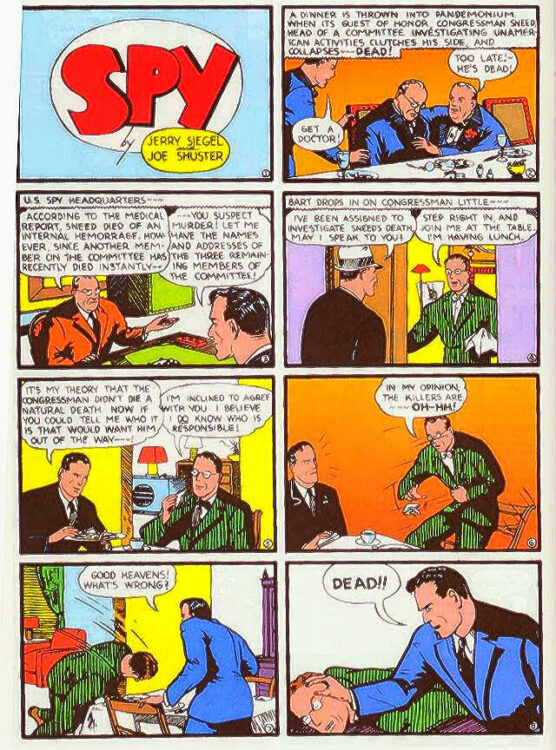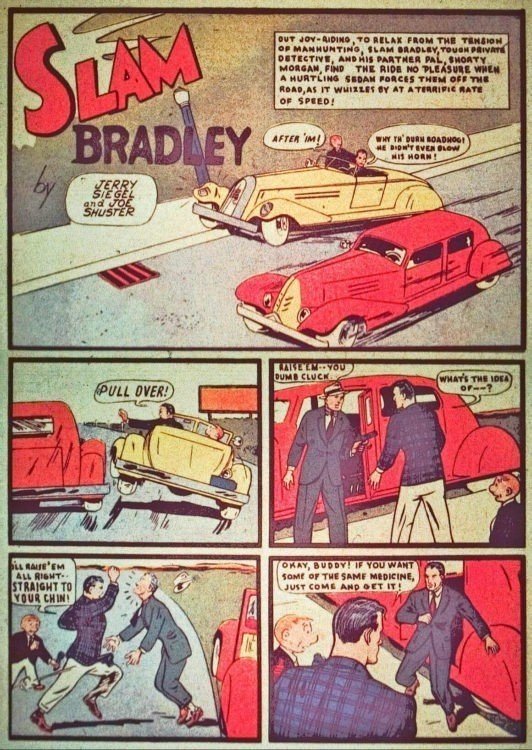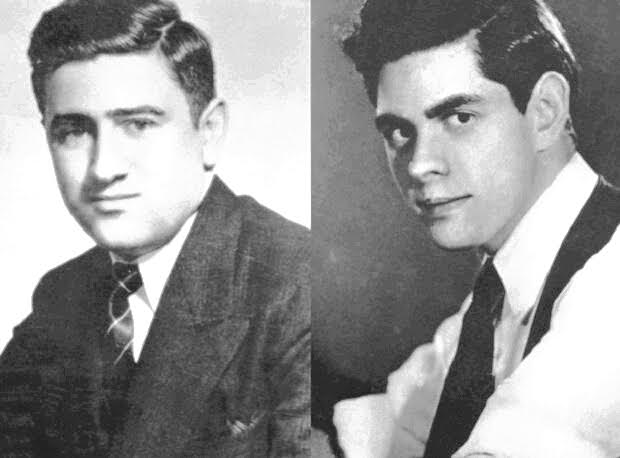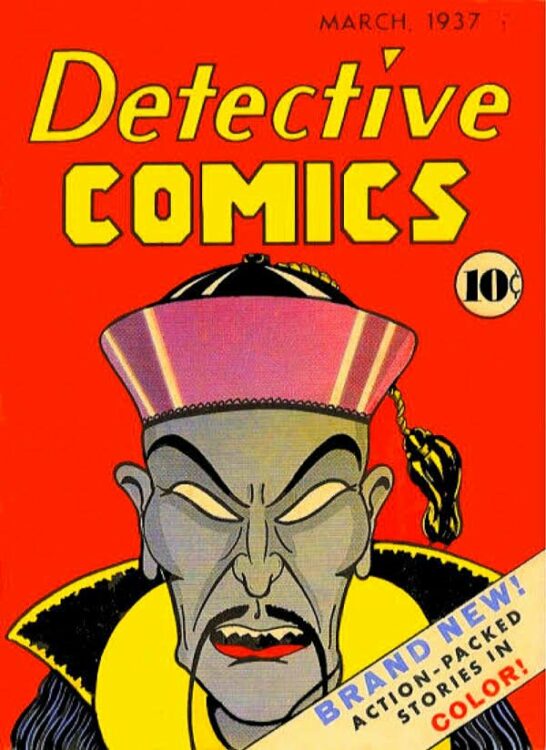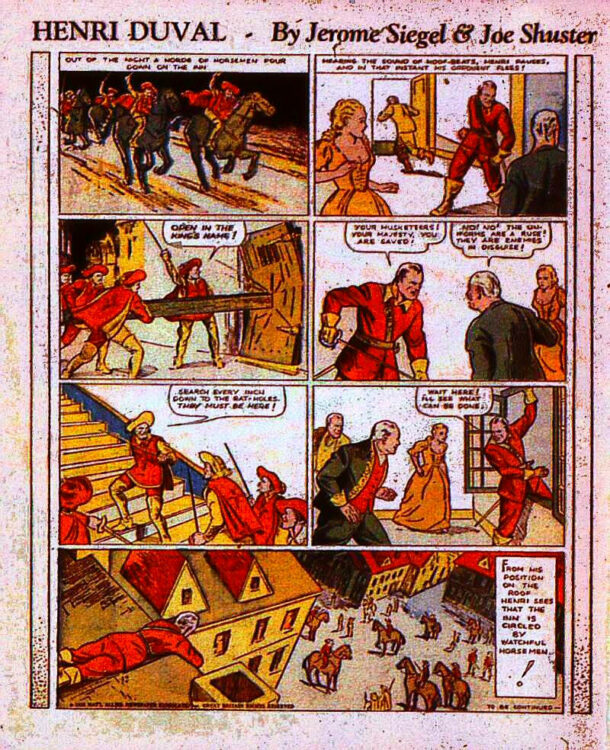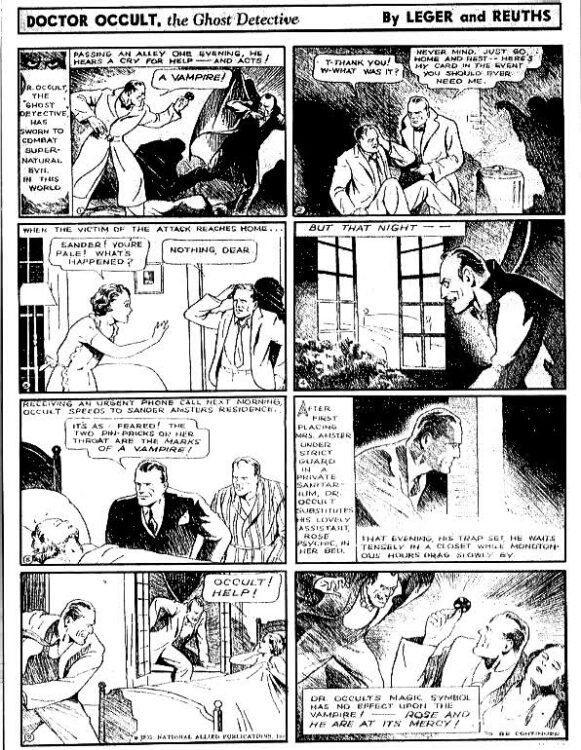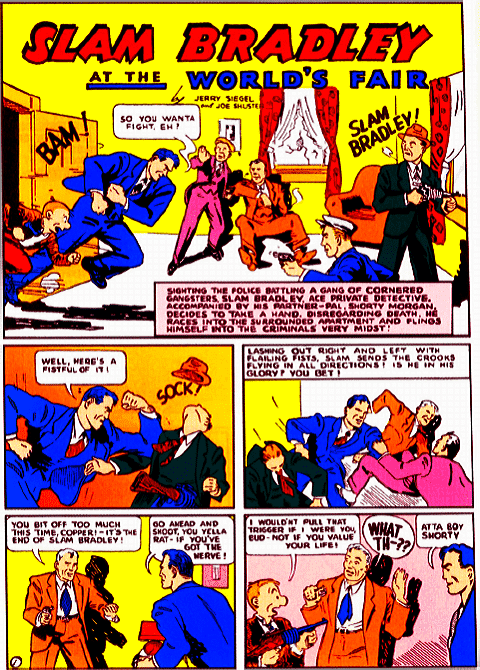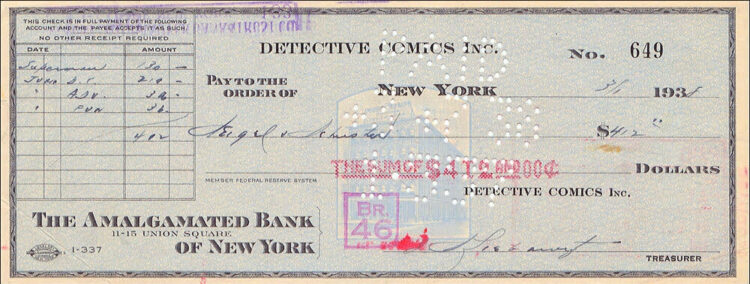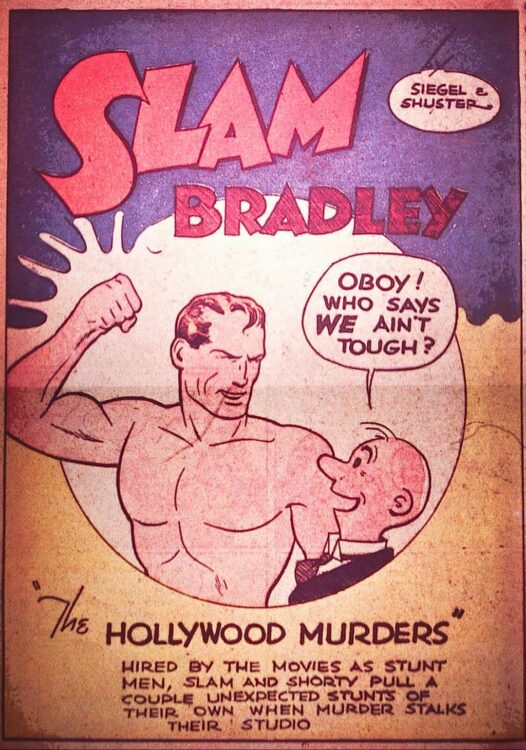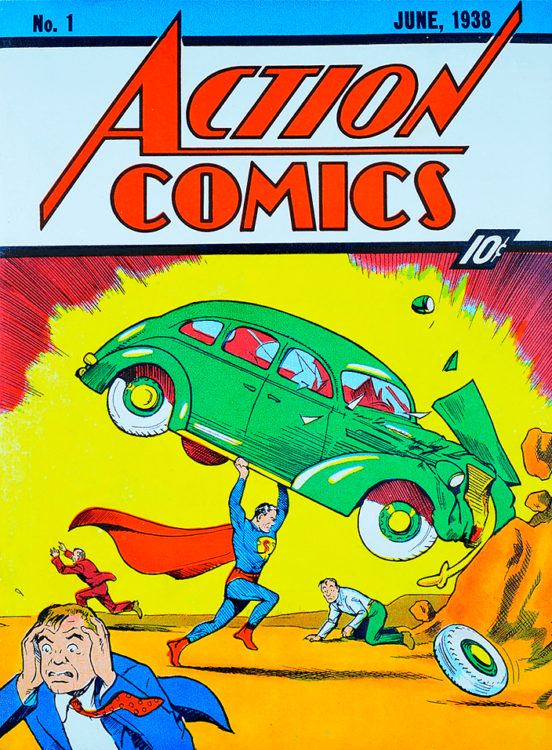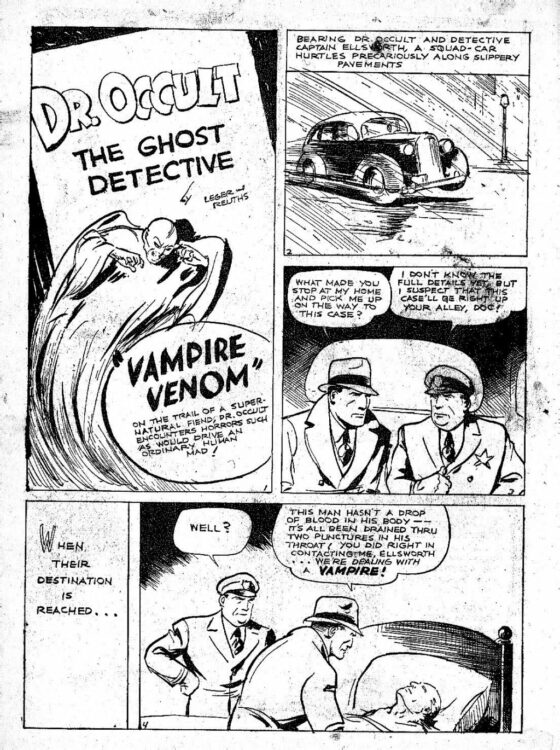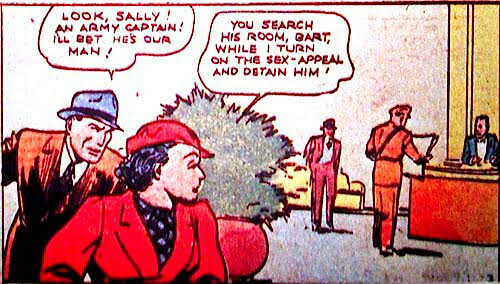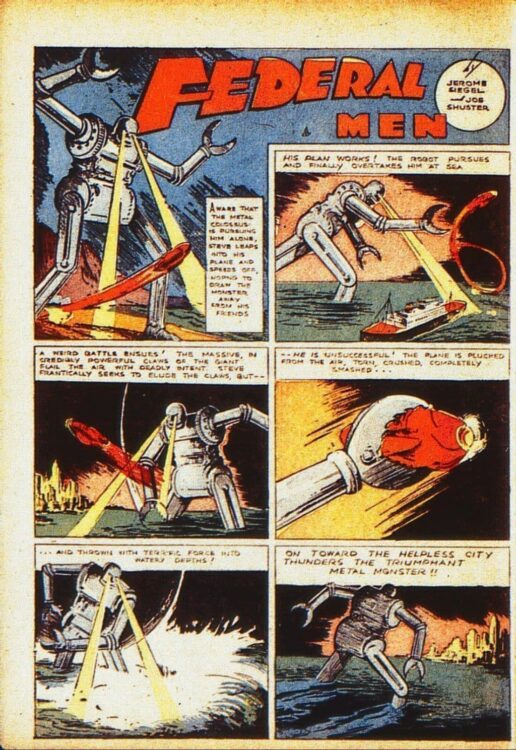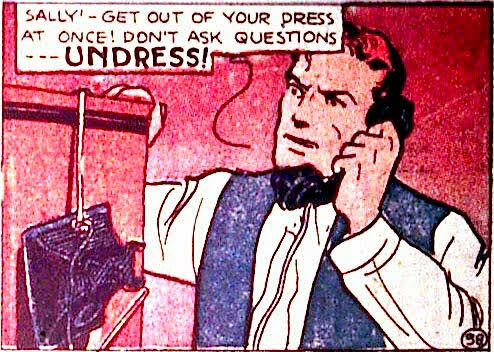Before Krypton Exploded, There Was Slam Bradley By Matthew Rizzuto
Before Krypton Exploded, There Was Slam Bradley. The breathtaking power and the phenomenal brilliance of Jerry Siegel and Joe Shuster’s Superman changed everything, not just in comics, but in pop culture itself. When you take a moment to consider and think about it, the magnitude of friendship has amazing meaning, at least when it came to two of the graduates of Glenville High School’s Class of 1934 in Cleveland, Ohio.
The tales of writer Jerry Siegel and the art of artist Joe Shuster were beyond comprehension that were published in comic books. The reason that this is so significant is because it is the birth of what will exist soon nationwide and throughout the entire world after it is published.
You see, long before the mighty Superman appeared on the front cover and within the colorful pages of Action Comics #1 and long before Jor-El and Lara Lor-Van sent their only begotten son into a rocket ship hurtling in outer space towards the planet Earthand within the minds of Jerry Siegel and Joe Shuster in the Glenville section of Cleveland, Ohio, certain seeds needed to be planted first before anything astonishing could ever be initiated with everyone’s favorite Kryptonian. The imaginations of Jerry Siegel and Joe Shuster exploded long before the planet Krypton ever did.
Everything sensational for Jerry and Joe begins in New Fun Comics #6. The reason is simply because the individuals that were running National Periodical Publications (today DC Comics) weren’t exactly convinced on Jerry and Joe’s magnificent idea about a bulletproof man from another world that could fly. They needed some convincing of what they could accomplish. Sure, there were those in the company who believed in the work and in the genius of Jerry Siegel and Joe Shuster, like Major Malcolm Wheeler-Nicholson and their editor Vin Sullivan, but there were others that needed to be convinced.
What you are about to read is some of the labor that Jerry and Joe did before the company would allow Superman to be published. The first of many stories by the legendary team of Siegel and Shuster first appeared in October, 1935 in New Fun Comics #6. It was deep within those features that Jerry Siegel and Joe Shuster introduced two brand-new characters to comics readers.
The kind-hearted swashbuckler “Hendi Duval of France, Famed Soldier of France” and the supernatural seeker “Dr. Occult”, onto the landscape of comics.
Of course, the enormous storytelling potential of Jerry Siegel and Joe Shuster did not cease with New Fun Comics. The duo of Siegel and Shuster accomplished five segments, 6 pages each of Henri Duval. Duval’s melodramatic scenarios happened in the time of Alexandre Dumas’ The Three Musketeers while Dr. Occult’s nights of supernatural mystery and intrigue was more of a modern tale (during the 1930’s, that is) and a much bigger triumph for Jerry Siegel and Joe Shuster. Hard to believe, the feature bore the byline “Leger and Reuths”, a pseudo-anagram of their names, instead of saying Siegel and Shuster.
The character was a lot like Dashiell Hammett’s Sam Spade character with supernatural powers. The good doctor was so successful that he appeared in 27 issues of New Fun Comics, which was later be known as More Fun Comics (issues #6-32 until June 1938). One would think that with the character so vastly popular, that he might receive his own comics issue. That wouldn’t happen for Siegel and Shuster until later, with massive success of The Man of Steel in June of 1939.Under the interesting title of Dr. Mystic, he first appeared in The Comic Magazine #1 in only one page. The daring deeds of the otherworldly detective Dr. Occult were considered amazing by many readers. Amidst his remarkable gifts was telekinesis, hypnosis, illusion, astral projection and his wits. His traditional outfit was a trench coat, a suit and a fedora, but for the final Dr. Occult story…he wore a fantastic costume with a skin-tight bodysuit, trunks on the outside of his pants and a cape. Does that style of costume sound familiar? It should.
Especially, with a superhero created later on by Jerry Siegel and Joe Shuster. If you’re still stumped, I’ll give you a hint: He’ll have The Gift of Flight with powers and abilities far beyond those of mortal men. The final four page spine-tingling segment of Dr. Occult magically appeared in June 1938 within the pages of More Fun Comics #32. Incidentally, that was the same month of the first appearance of The Man of Steel in Action Comics #1. Shuster continued to draw the Radio Squad 6 page adventures until More Fun Comics #49 in November 1939, while The Man of Tomorrow’s other co-creator Jerry Siegel wrote the tales through More Fun Comics #70 in August 1941. The swashbuckling tales of Henri Duval were replaced by a completely different plot at first called, “Calling All Cars”, but in More Fun Comics #19, the feature was renamed “Radio Squad”. The courageous warriors of the story were two cops who spent their quality time sharing a police car. Imagine “Car 54, Where Are You?” with less comedy and more action. There you go.
The plots devised by Superman’s creators were quite visible in other comics published by the company, known as National Periodical Publications. While More Fun Comics (previously New Fun Comics and More New Fun Comics) was the very first comics that Jerry Siegel and Joe Shuster produced for the company, their second was Adventure Comics (previously New Comics and New Adventure Comics). Even though, Jerry Siegel and Joe Shuster did not accomplish the very first issue of New Comics, they were around for the second installment with New Comics #2 in January 1936. Siegel and Shuster told a four page story of “Federal Men” with the wickedly odd tale entitled, “The Manning Baby Kidnapping”.
The Federal Men were hardcore FBI agents. True tough guy G-men in the flesh.
The segments between two to four page stories would appear in New Comics #3 up to issue #11. The law enforcing scenarios of the Federal Men would continue in New Adventure Comics from issue #12 all the way to issue #31 except for #15. When the issue became known as Adventure Comics, the series was continued by both Jerry and Joe until March 1939 with Adventure #36. Approximately 7 more tales with input from other members of The Joe Shuster Art Studio in Cleveland, Ohio would continue to contribute all the way through issue #43 in October 1939 while Jerry Siegel wrote the majority of the stories until Adventure #57 in December of 1940. Both Federal Men and Calling All Cars are the original ideas of Major Malcolm Wheeler-Nicholson.
For the third title that Jerry Siegel and Joe Shuster worked on together before Superman’s famous origin existed was the one that would soon give the company its famous title. For those of you who are not aware of it, DC stands for Detective Comics. Soon to be the future home of Batman, Detective Comics first issue hit the newsstands in March of 1937 with two completely different Siegel and Shuster stories beginning in that issue. The private eye “Slam Bradley” and “Bart Regan, Spy”. Of the two, Slam Bradley was the more vigorous storytelling and more appealing to comics reading audiences. At only a mere 13 pages, it was frequently the longest story in the book. Also, the last major feature in the book and because it was the last major story, which was a favored, featured position in the anthology titles of that era. Sometimes, it would be the lead story, but rarely the cover plot. Occasionally, the stories would have a little resemblance to Roy Crane’s Wash Tubbs comic strip. Many comic book characters and superheroes would have sidekicks and Slam’s partner, the descriptively named Shorty Morgan, bore a height resemblance to Wash, while Slam fulfilled the position of Captain Easy, the rough and tumble man of action. For a moment, think of Chester Gould’s Dick Tracy, no two-way wristwatch radio, but with a short and durable sidekick. Believe it or not, that’s Slam Bradley and Shorty Morgan. Slam Bradley was created by Major Malcolm Wheeler-Nicholson and Shorty Morgan was created by Jerry Siegel. It’s quite obvious that the character of Shorty Morgan was a later inspiration for Jerry Siegel and Joe Shuster’s unique character, Funnyman.
In the adventures of Slam and Shorty, they would travel the world as detectives, inserting themselves into problems of other people and bringing a gruff brand of Justice to solve them. The last Slam Bradley to bear Shuster’s name was the story in October 1939 for Detective Comics #32. In Spy, Bart Regan was a no-nonsense counterspy for the U.S. government. Armed with with his sidekick fiancé Sally Norris, they’re traveling the world, dealing with villainous foreigners and nasty traitors. The final Spy was located in Detective Comics #28 for June 1939 and Jerry Siegel was the writer through issue #55 September 1941. The Slam Bradley and Shorty Morgan adventures would run until October 1949 with Detective #152, but unfortunately, a portion of Bart Regan’s title would be let go and simply be known as just Spy. As the way things that were, the final Spy issue was in February 1943 of Detective Comics #72.
By the time Superman appeared in Action Comics #1 dated June 1938, first published on April 18th, 1938, the team of Siegel and Shuster were highly experienced comic book creators. In that month alone, besides the first appearance of The Man of Steel, Jerry and Joe had five features appearing in National Periodical Publications (today DC Comics): Slam Bradley, Radio Squad, Spy, Federal Men and Dr. Occult. The massive difference between those titles and Superman was the success and the long-term influence of the latter compared to the others. At this point, Jerry Siegel and Joe Shuster had been in the comics industry for over two years, almost as long as anyone else and creating comics, inventing fun characters and everlasting caped heroes at the time. If there was one thing that Jerry Siegel and Joe Shuster lacked is that they were unfamiliar with the business of copyrights. When it came to signing specific contracts, they had no idea what they were accomplishing whatsoever. Because they were completely unexperienced in that department, it would hurt them in the long run.
When you’re bullied into signing contracts that you have no idea what you’re signing because you were not aware that you needed an attorney to assist you, it will show and the evidence will be brutally shocking. Jerry Siegel and Joe Shuster had no idea they needed appropriate legal counsel to help them out. They didn’t just willfully sign something. They were bullied into it. Yes, as insane as that sounds, they did sign documentation and they were completely unaware they needed a copyright lawyer to assist them. You see, history is history. You can color it up anyway you’d like, you can disregard what you prefer and keep what you want or you can accept it as is what it is. History is still history. Whether you agree with that or not, what happened to Jerry Siegel and Joe Shuster is more than just deplorable, it’s simply un-American and pathetic, far beyond my words here. The check to get Superman published. It was more than just a check for $130. It was more than just a check for $412. They were signing away so much and if they would’ve known, from what I’ve been told by their relatives that what they were signing away, they never would have signed those contracts to begin with. Never.
The noted putz Jack Liebowitz told them, “Don’t sign those contracts, sign THESE contracts”. Because of the greed of a couple of individuals that worked for National Periodical Publications, Jerry Siegel and Joe Shuster lost so much and from 1947 to 1975, for 27 years, Jerry Siegel and Joe Shuster did not see a penny of their work. They didn’t know that what they signed back in 1938 would be haunting them for years and decades to come. This is not a happy story. This is a very terrifying tale of people who believed that good people would take care of them with a handshake and “Uncle Jack” Liebowitz certainly did not. Yes, Jerry Siegel and Joe Shuster were in poverty and they tried to accomplish everything they possibly could within their power to get out of it. It took individuals from the industry that Jerry and Joe helped invent to save their very lives. What Neal Adams, Jerry Robinson, Phil Yeh and several others chose to accomplish and the truckloads of countless generous individuals from the science fiction, fantasy, horror and the comics industry to speak out against the treatment that Jerry Siegel and Joe Shuster received and what happened to them, courtesy of the corporate negligence at National Periodical Publications.
Who were Jerry Siegel and Joe Shuster? They were their work and that’s what was most important to them.
join us for more discussion at the CBH Facebook group
get historic comic CBH Merchandise
check out the CBH Youtube Channel
check out the CBH Podcast available on Apple Podcasts, Google PlayerFM and Stitcher.
Images are not intended to infringe on copyright, but rather used for academic purpose.
All Comics Above© DC Comics, Photos ©Their Respective Copyright holders
The opinions of any one article do not reflect the intentions of the website.








